Zabbix is a free and open source monitoring tool which is used to monitor and track the availability & performance of servers, network devices and other IT assets which are on network.
Zabbix uses database like MySQL, MariaDB, Oracle and IBM DB2 to store its data. Zabbix web interface is written in PHP.
Some of its key features are listed below :
- Monitor everything which is on network like Servers, applications, database instance and network devices.
- Zabbix provides Web based administration interface.
- Monitoring CPU utilization of a particular process or a group of process ( proc.cpu.util)
- Using low-level discovery rules, zabbix can discover Vmware hypervisor ( ESXI ) and Virtual machines.
- Zabbix also supports agentless monitoring
- Monitoring of database servers like MySQL, PostgreSQL, Oracle and Microsoft SQL Server.
- Zabbix can also perform the task of capacity planning for your environment.
- Zabbix is Open Source so no cost involved and can be deployed on small and large environment.
- Hardware Monitoring using Zabbix via IPMI credentials.
- Network Device monitoring using snmp agents.
In this article we will install the latest version of Zabbix 4.4 on CentOS 7 machine. Below are the details of my server on which i will install Zabbix.
- Hostname = zabbix.linuxtechi.com
- IP Address = 192.168.1.7
- OS = CentOS 7
- SELinux = Enforcing
- Firewall = Running
Before Starting Installation, first update your system using below command :
[root@zabbix ~]# yum -y update [root@zabbix ~]# reboot
Step:1 Enable Zabbix Repository
Zabbix package is not available in the default yum repository, so we will enable zabbix repository using below command.
[root@zabbix ~]# yum install https://repo.zabbix.com/zabbix/4.4/rhel/7/x86_64/zabbix-release-4.4-1.el7.noarch.rpm
Step:2 Install Zabbix Server, Database, Web Server and PHP packages
Use the below command to install rpm package of Zabbix server, Database Sever (MariaDB) , Web Server ( http) and PHP.
[root@zabbix ~]# yum -y install zabbix-server-mysql zabbix-web-mysql mysql mariadb-server httpd php
Step:3 Configure Zabbix Database.
Start the Database (MariaDB) service
[root@zabbix ~]# systemctl start mariadb [root@zabbix ~]# systemctl enable mariadb ln -s '/usr/lib/systemd/system/mariadb.service' '/etc/systemd/system/multi-user.target.wants/mariadb.service' [root@zabbix ~]#
Use ‘mysql_secure_installation‘ command to set the root password of mariadb database and configure other parameters like ‘Remove anonymous users‘, ‘Disallow root login remotely‘ and ‘Remove test database and access to it‘
[root@zabbix ~]# mysql_secure_installation
Now create the Zabbix Database (zabbix_db) and database user (zabbix_user) and grant all privileges to the user on the Zabbix database.
[root@zabbix ~]# mysql -u root -p Enter password: Welcome to the MariaDB monitor. Commands end with ; or \g. Your MariaDB connection id is 10 Server version: 5.5.47-MariaDB MariaDB Server Copyright (c) 2000, 2015, Oracle, MariaDB Corporation Ab and others. Type 'help;' or '\h' for help. Type '\c' to clear the current input statement. MariaDB [(none)]> create database zabbix_db; Query OK, 1 row affected (0.00 sec) MariaDB [(none)]> grant all privileges on zabbix_db.* to zabbix_user@localhost identified by <new_password>; Query OK, 0 rows affected (0.00 sec) MariaDB [(none)]> flush privileges; Query OK, 0 rows affected (0.00 sec) MariaDB [(none)]> exit Bye [root@zabbix ~]#
Now import the database Schema using below commands,
[root@zabbix ~]# cd /usr/share/doc/zabbix-server-mysql-4.4.5/ [root@zabbix zabbix-server-mysql-4.4.5]# gunzip create.sql.gz [root@zabbix zabbix-server-mysql-4.4.5]# mysql -u root -p zabbix_db < create.sql Enter password: [root@zabbix zabbix-server-mysql-4.4.5]#
Step:4 Edit Zabbix Server Configuration file
Edit the Zabbix Server’s config file (/etc/zabbix/zabbix_server.conf) and specify the database name for zabbix , database user name & its password.
[root@zabbix ~]# vi /etc/zabbix/zabbix_server.conf ................................... DBHost=localhost DBName=zabbix_db DBUser=zabbix_user DBPassword=XXXXXXX ...................................
Save & exit the file.
Configure PHP Setting
Set the below parameters in the PHP config file (/etc/php.ini )
[root@zabbix ~]# vi /etc/php.ini ................................ max_execution_time = 600 max_input_time = 600 memory_limit = 256M post_max_size = 32M upload_max_filesize = 16M date.timezone = Asia/Kolkata ...............................
Allow the ports in the Firewall
[root@zabbix ~]# firewall-cmd --permanent --add-port=10050/tcp success [root@zabbix ~]# firewall-cmd --permanent --add-port=10051/tcp success [root@zabbix ~]# firewall-cmd --permanent --add-port=80/tcp success [root@zabbix ~]# firewall-cmd --reload success [root@zabbix ~]#
Start the Zabbix and Web Server Service and make sure it is enable across the reboot.
[root@zabbix ~]# systemctl start zabbix-server [root@zabbix ~]# systemctl enable zabbix-server ln -s '/usr/lib/systemd/system/zabbix-server.service' '/etc/systemd/system/multi-user.target.wants/zabbix-server.service' [root@zabbix ~]# [root@zabbix ~]# systemctl start httpd [root@zabbix ~]# systemctl enable httpd ln -s '/usr/lib/systemd/system/httpd.service' '/etc/systemd/system/multi-user.target.wants/httpd.service' [root@zabbix ~]#
As Selinux is running in enforcing mode, so it is expected that zabbix service will not start properly, so set the following selinux rules
[root@zabbix ~]# yum install policycoreutils-python -y [root@zabbix ~]# setsebool -P httpd_can_connect_zabbix on [root@zabbix ~]# setsebool -P httpd_can_network_connect on [root@zabbix ~]# setsebool -P zabbix_can_network on [root@zabbix ~]# semodule -i zabbix-server.pp [root@zabbix ~]# semodule -i zabbix_server_setrlimit.pp [root@zabbix ~]# curl https://support.zabbix.com/secure/attachment/53320/zabbix_server_add.te > zabbix_server_add.te [root@zabbix ~]# checkmodule -M -m -o zabbix_server_add.mod zabbix_server_add.te checkmodule: loading policy configuration from zabbix_server_add.te checkmodule: policy configuration loaded checkmodule: writing binary representation (version 19) to zabbix_server_add.mod [root@zabbix ~]# semodule_package -m zabbix_server_add.mod -o zabbix_server_add.pp [root@zabbix ~]# semodule -i zabbix_server_add.pp
After setting up selinux rules , restart zabbix service
[root@zabbix ~]# systemctl start zabbix-server
Step:5 Browse the Zabbix Web interface using below URL
http://192.168.1.7/zabbix/ or http://zabbix.linuxtechi.com/zabbix
Replace the IP address or hostname as per your setup.
Click on ‘Next step’
On this Step Zabbix Pre-requisites are checked and verified
Click on ‘Next step’
Specify the Zabbix Database name, database user and its password.
Click on ‘Next step’ to continue.
Specify the Zabbix Server details and Port number.
Click on ‘Next step’ to continue.
Pre-installation summary of Zabbix Servers, click on ‘Next step’ to continue.
As we can see that Zabbix installation is completed successfully
When we click on ‘finish’ , it will re-direct us to the Zabbix web interface Console.
Use user name as ‘admin‘ and password ‘zabbix‘
Zabbix Server Dashboard :
Step:6 Add a node to Zabbix Server for Monitoring.
Let’s assume i want to add my Ubuntu 16.04 Machine to Zabbix Server for monitoring. Login to the machine and perform the following tasks .
linuxtechi@cloud:~$ sudo apt-get install zabbix-agent
Edit the Agent file and specify the Zabbix Server address.
linuxtechi@cloud:~$ sudo vi /etc/zabbix/zabbix_agentd.conf .................................. Server=192.168.1.7 ServerActive=192.168.1.7 Hostname=cloud.linuxtechi.com ..................................
Start Zabbix Agent Service
linuxtechi@cloud:~$ sudo systemctl start zabbix-agent linuxtechi@cloud:~$ sudo systemctl enable zabbix-agent Synchronizing state of zabbix-agent.service with SysV init with /lib/systemd/systemd-sysv-install... Executing /lib/systemd/systemd-sysv-install enable zabbix-agent linuxtechi@cloud:~$
Now Go to the Zabbix Web Interface .
Click on Configuration —> Hosts –> Create Host
Specify the Host name, IP address and Group names. In Templates Tab, search appropriate templates and click on Add.
To View the events for all the hosts or a particular host, Click on Monitoring —> Triggers
That’s it, Basic Monitoring and Configuration is Completed. Explore the Zabbix and have fun 🙂
Also Read: How to Install Nagios Core 4 on CentOS 7 / RHEL 7
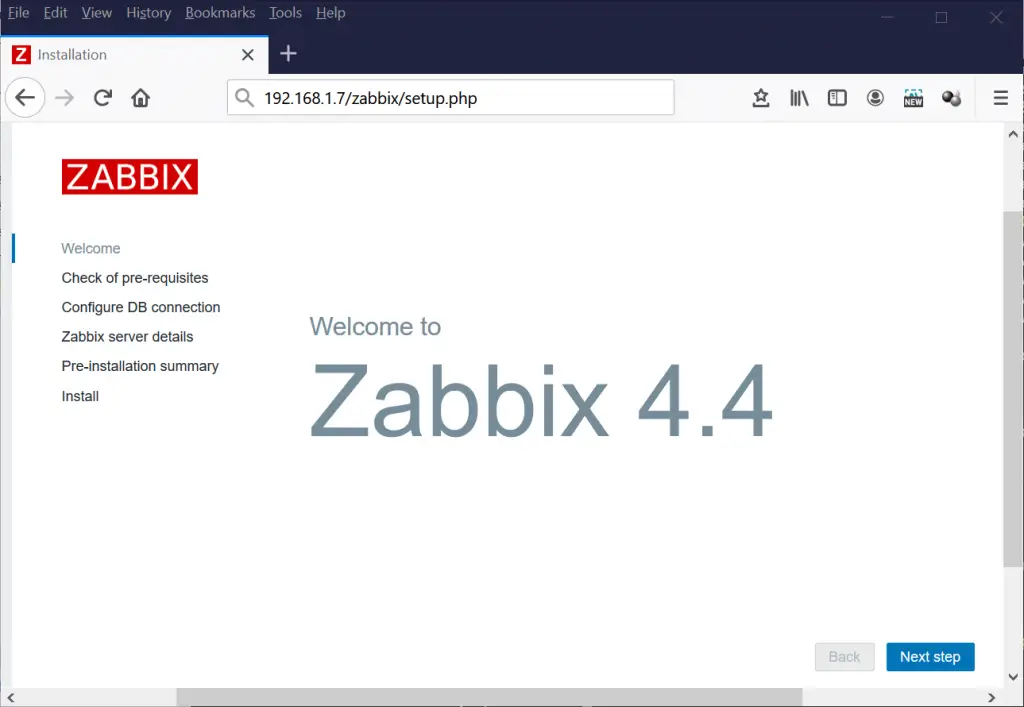
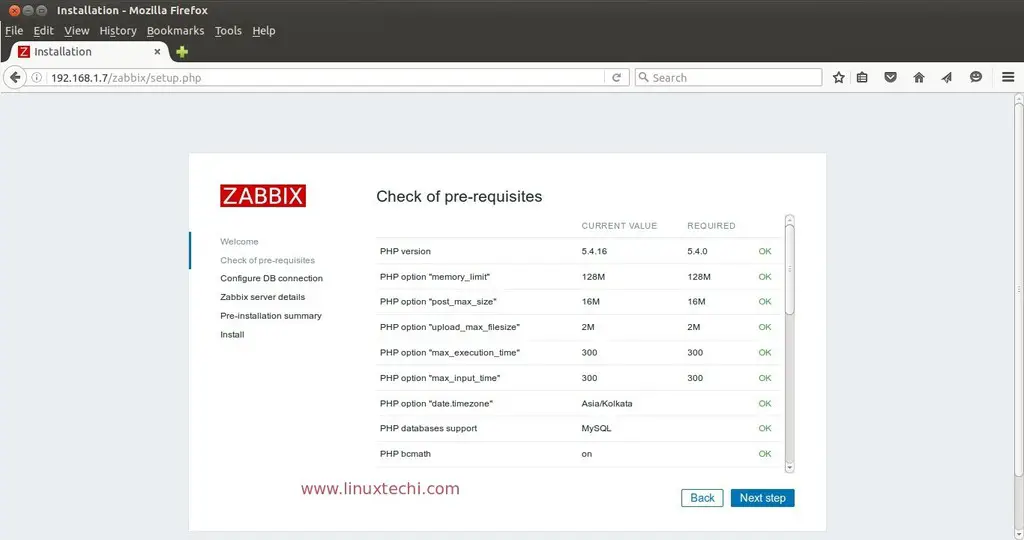
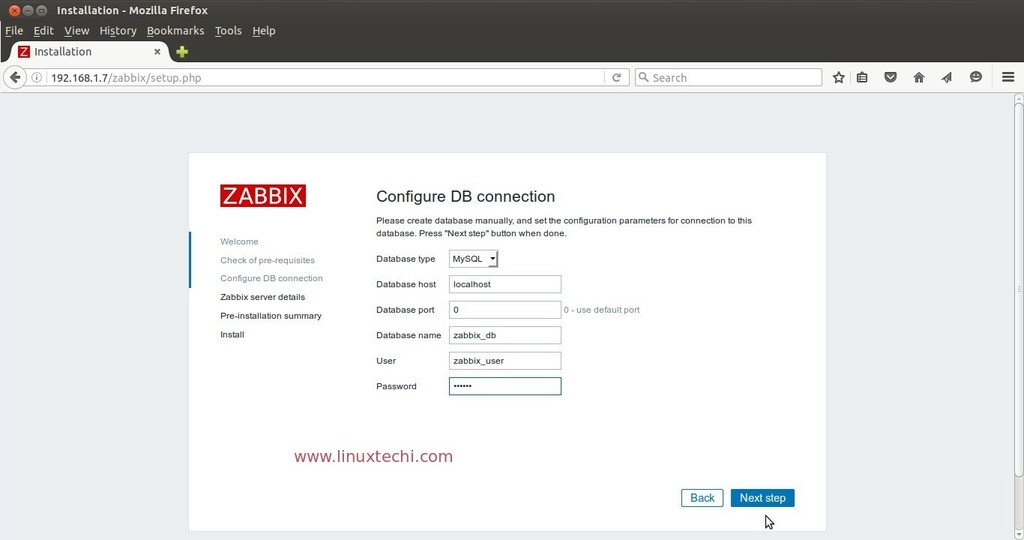
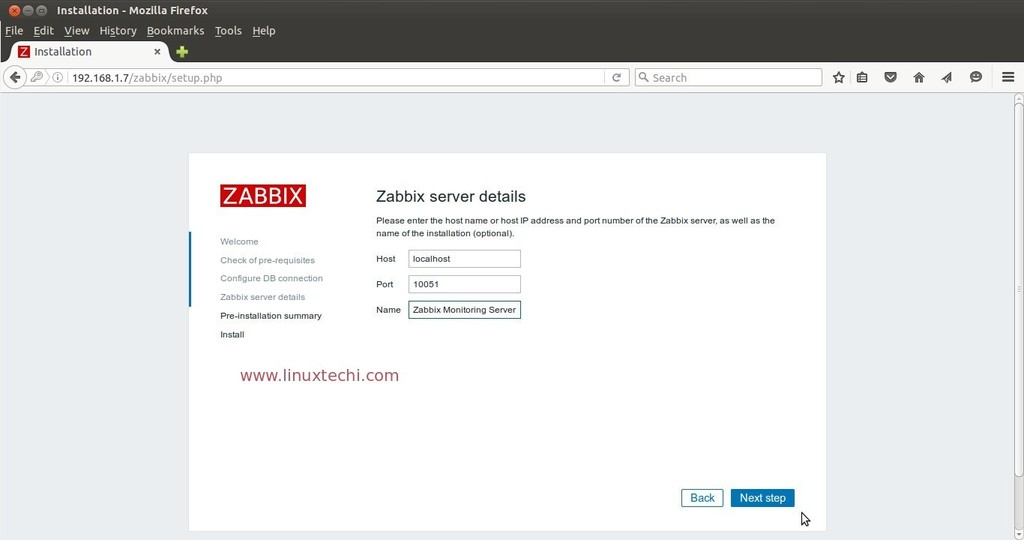
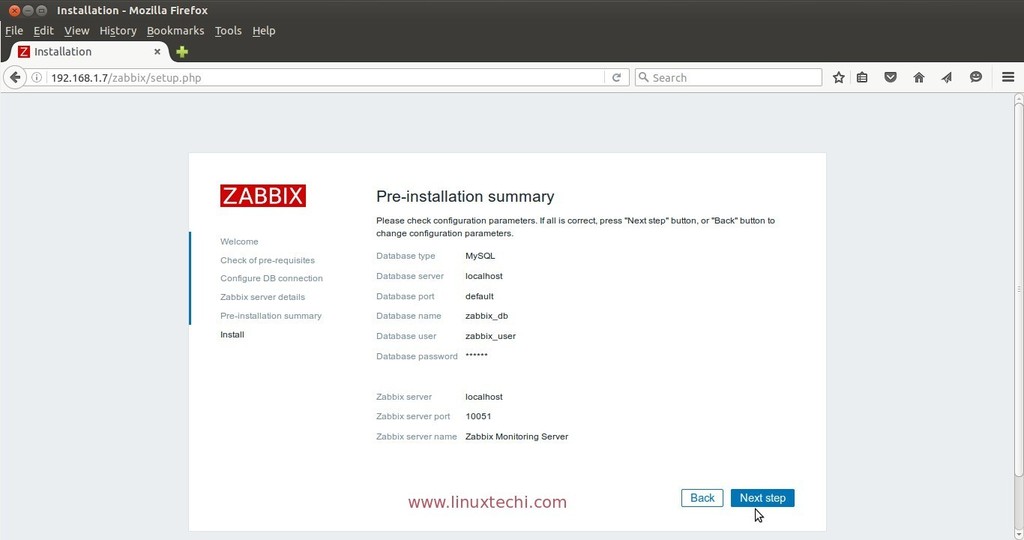
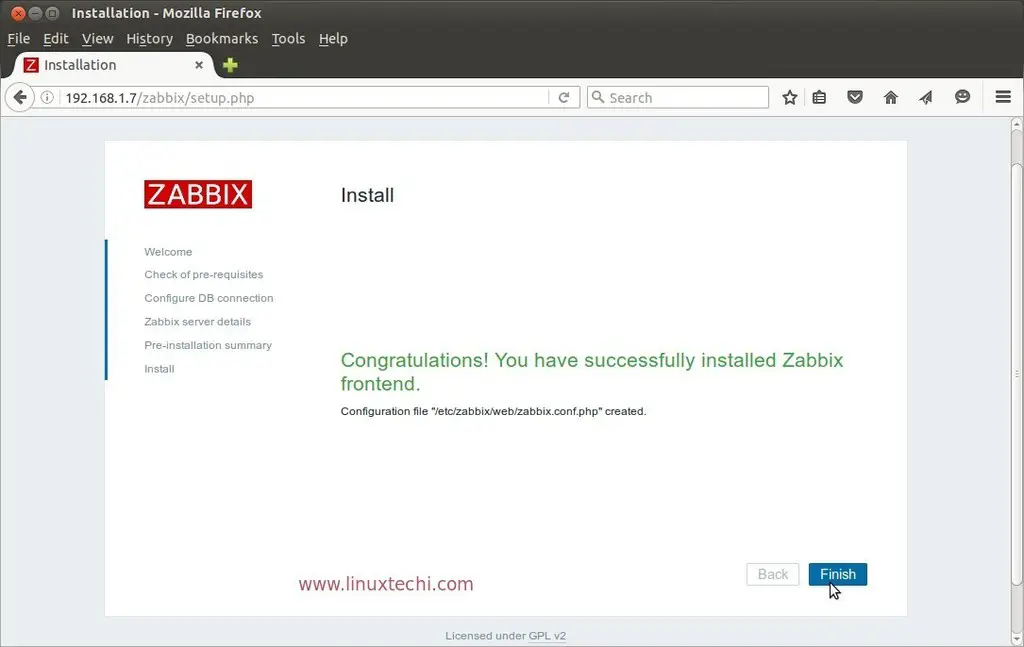
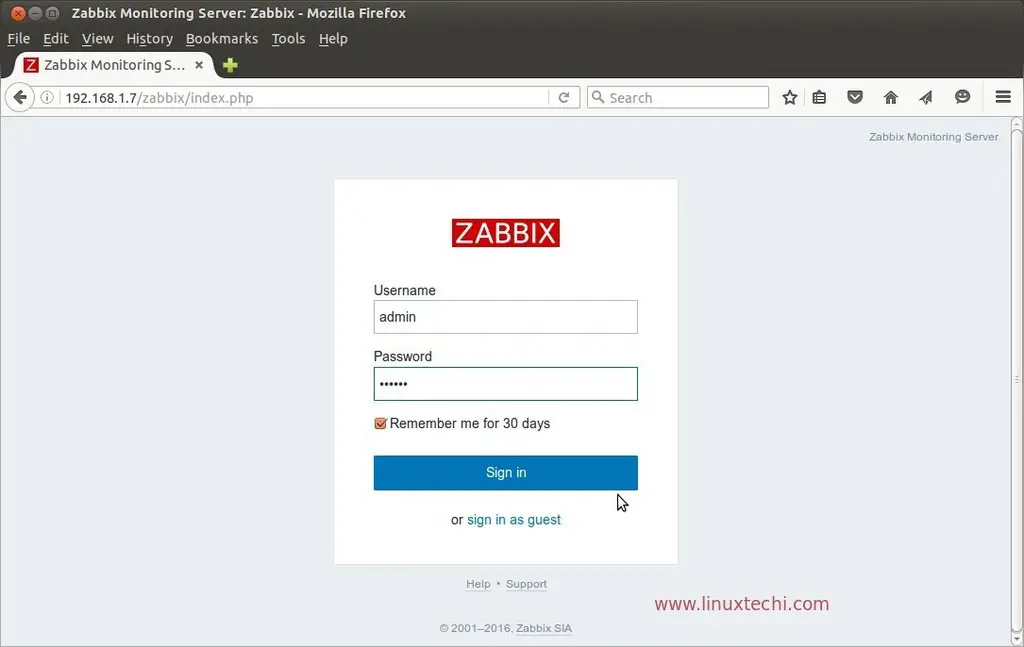
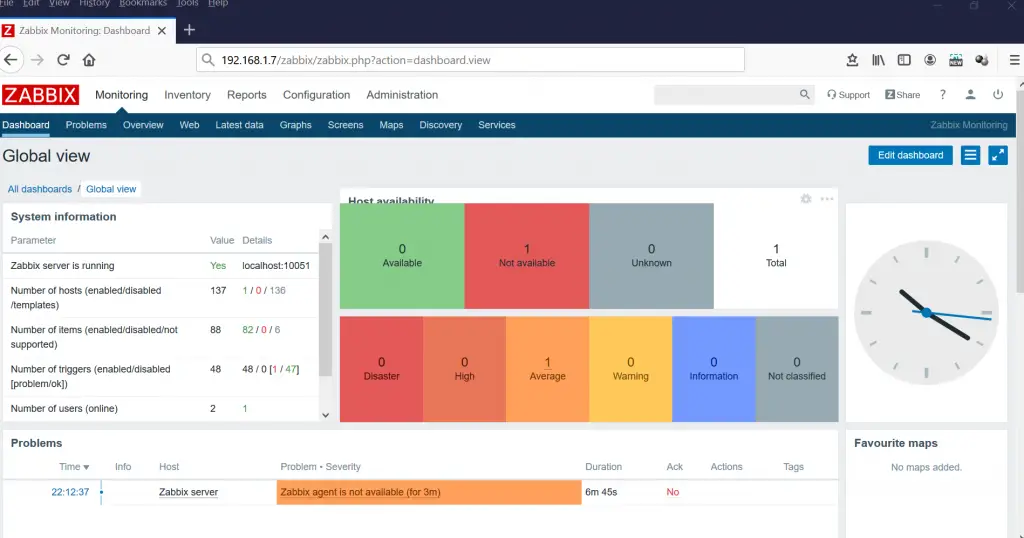
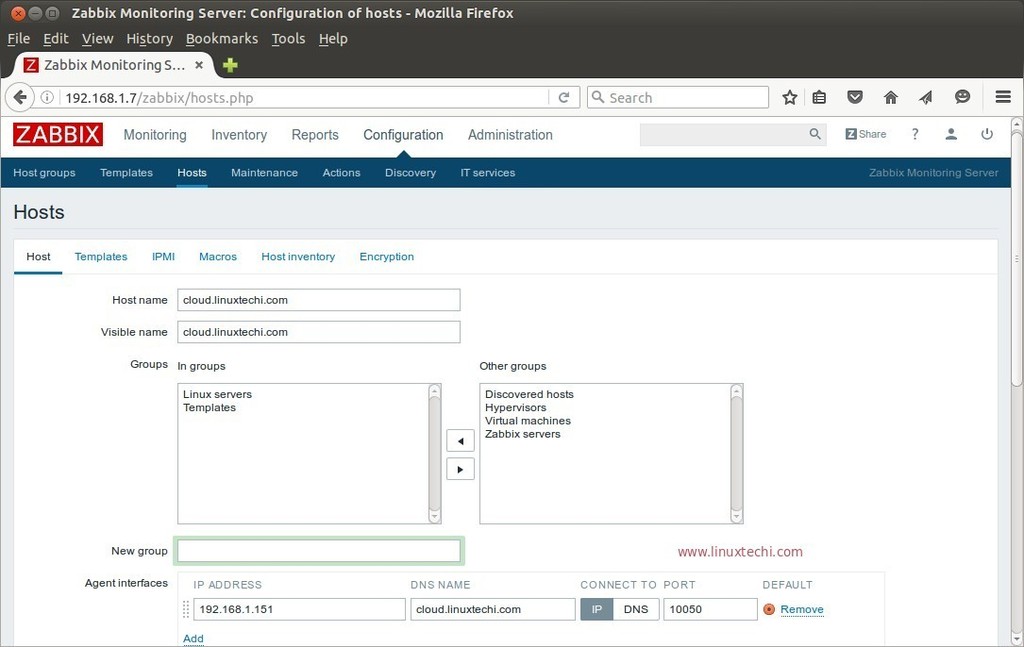
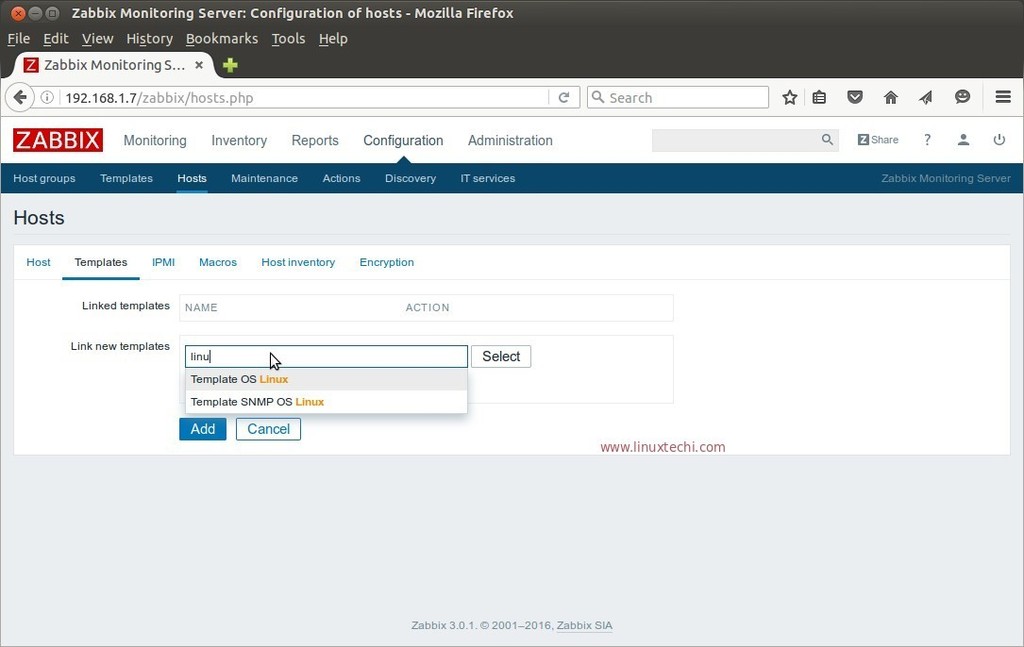
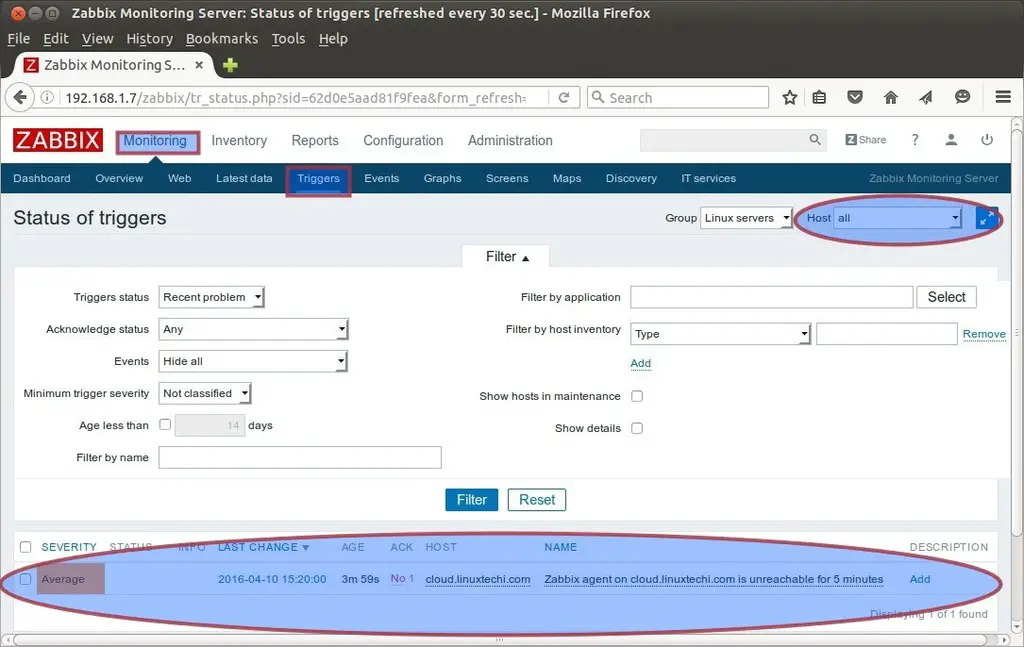
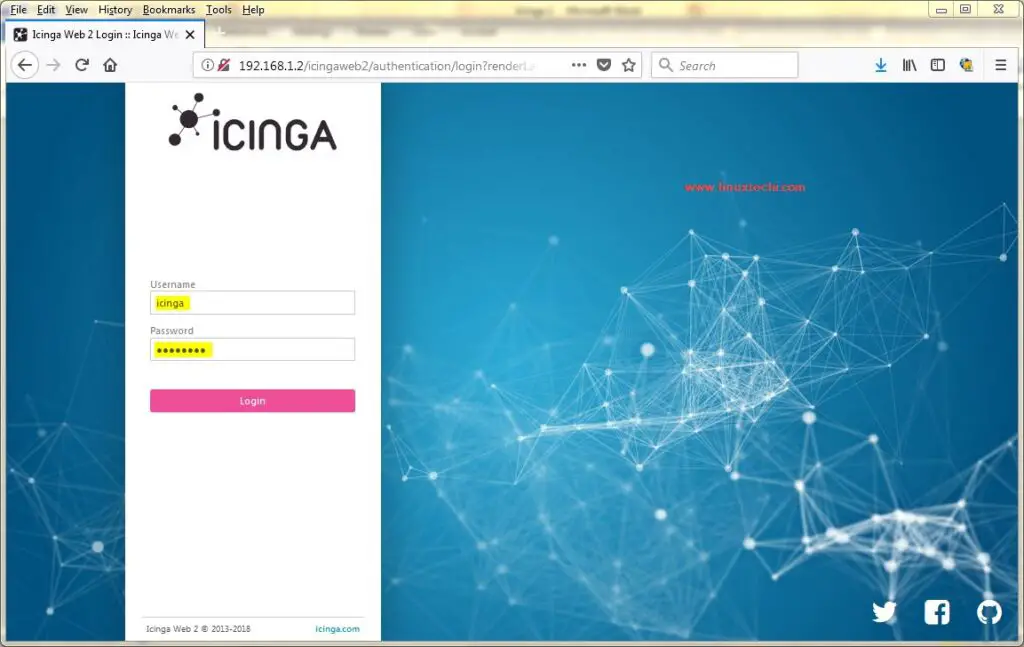



Hi!
First of all great guide.
I’m having an issue with this install, namely on the Zabbix Server Dashboard it shows me that “Zabbix server is running No localhost:10051”
What could be the issue here? Also i’m using Azure to host the VM, so could it be something related to their config?
Hi…
I managed to follow your guide, but after everything was finished (parameter: Zabbix server is running value: No localhost: 100510) please help resolve this
i am not able to start the zabbix-server
[root@localhost zabbix-server-mysql-3.0.3]# systemctl start zabbix-server
Job for zabbix-server.service failed. See ‘systemctl status zabbix-server.service’ and ‘journalctl -xn’ for details.
did u disable selinux ?
Hi,
things you need to do:
setsebool -P httpd_can_connect_zabbix on
If you get an error like below,
Job for zabbix-server.service failed because a configured resource limit was exceeded. See “systemctl status zabbix-server.service” and “journalctl -xe” for details.
You may need to create custom exceptions and allow those through SELinux.
yum install policycoreutils-python
cat /var/log/audit/audit.log | grep zab | audit2allow -M zabbix-server
semodule -i zabbix-server.pp
when i am checking the status it s giving the below status
[root@localhost ~]# systemctl status zabbix-server.service
zabbix-server.service – Zabbix Server
Loaded: loaded (/usr/lib/systemd/system/zabbix-server.service; disabled)
Active: activating (auto-restart) (Result: signal) since Wed 2016-06-08 02:05:56 EDT; 2s ago
Process: 2642 ExecStart=/usr/sbin/zabbix_server -c $CONFFILE (code=killed, signal=SEGV)
Jun 08 02:05:56 localhost.localdomain systemd[1]: zabbix-server.service: control process exited, code=killed status=11
Jun 08 02:05:56 localhost.localdomain systemd[1]: Failed to start Zabbix Server.
Jun 08 02:05:56 localhost.localdomain systemd[1]: Unit zabbix-server.service entered failed state.
Hello Balaraju ,
Have you updated your server before starting the installation …?
If Not, Please update it and then start Zabbix Server and then try to access it from web Browser.
Hi Pradeep,
I encounter the same problem as Balaraju did, do you mind showing me how to update server?
Hi Pradeep,
I already did the update, but the status of the Zabbix server is still activating(auto-restart)
Hello Pradeep,
It’ Done.
Why after updating it’s resolved. Which packages is required to zabbix-server to resolve this.
Thanks pradeep
Hello Pradeep,
On CentOS 7, I did update before and after, but the problem is still the same on zabbix web console. How ever when I check the zabbix server status, it is running. Can you provide some hints to troubleshoot this situation?
Thanks
Hello,
I had the same problem with MySQL not connecting and I found out that I needed to give httpd permission.
setsebool -P httpd_can_network_connect=true
Or you can just disable SELinux as well, but we don’t want that do we? 🙂
this is how to solve “zabbix-server.service failed. See ‘systemctl status zabbix-server.service’ and ‘journalctl -xn’ for details.” problem.
sudo yum install policycoreutils-python
sudo grep zabbix_server /var/log/audit/audit.log | audit2allow
sudo grep zabbix_server /var/log/audit/audit.log | audit2allow -M zabbix-limit
sudo semodule -i zabbix-limit.pp
sudo systemctl start zabbix-server
Another issue I encountered: After creating the database zabbix_db, I ran the command ant all privileges on zabbix_db.* to zabbix_user@localhost identified by ; I got the error: ERROR 1064 (42000): You have an error in your SQL syntax; check the manual that corresponds to your MariaDB server version for the right syntax to use near ” at line 1
Any ideas on this? Thanks!
Excellent and detailed tutorial, thank you.
The only extra thing I needed to do was:
mkdir /etc/zabbix/zabbix_server.conf.d/
which is apparently due to a Zabbix bug.
tried admin/zabbix upon first login but it does not work. I changed to Admin/zabbix and it worked. I am not sure why.